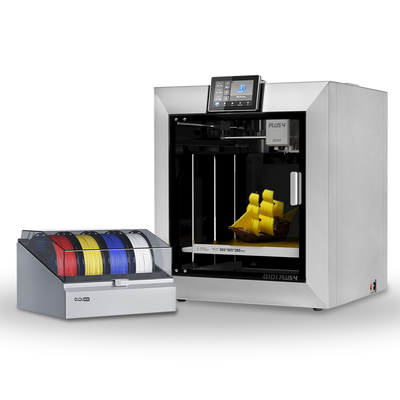Today I hot pressed the M4 screw sockets into the 99% solid PetG 3D printed guide mount using a soldering iron, and then went ahead and mounted up the new Vee guide assemblies.
Doing a trial threading of the wire it was very obvious that the wire was not vertical - heart sinking moment

But then I thought - hang on the upper mount can be controlled to set the wire to the angle you want - is in the range of movement - yes very easily. I set it vertical to my eye with very minimal movement of the U and V slides (X & Y axis for the top of the wire). So one of my measurements of the lower mounting block is obviously slightly out, but it looks like not worth re-printing as it can be adjusted out.
So once I'd wired up the contact blocks (upper and lower) and made a couple of plumbing connectors for the de-ionised water I gave it a 'powered up' run and nothing went bang

Now I need to read up on using the verticallity jig to re-set the wire dead nuts on (theoretically simple - the jig has upper and lower neons that light up when the wire touches them - I've done it before but its a good ten years ago.
Meanwhile a distraction arrived. All this 3D printing reminded me that although my Cetus 3D printer has given (and is still giving) sterling service I'd always intended to upgrade to a totally enclosed machine to keep out the workshop draughts and dust. So I've bought a Bambu Labs P1S Combo - half of which arrived this morning - but I'm being very good and not touching it until I've finished the Fanuc Tapcut Wire EDM.



 Recent Posts
Recent Posts
 But then I thought - hang on the upper mount can be controlled to set the wire to the angle you want - is in the range of movement - yes very easily. I set it vertical to my eye with very minimal movement of the U and V slides (X & Y axis for the top of the wire). So one of my measurements of the lower mounting block is obviously slightly out, but it looks like not worth re-printing as it can be adjusted out.
But then I thought - hang on the upper mount can be controlled to set the wire to the angle you want - is in the range of movement - yes very easily. I set it vertical to my eye with very minimal movement of the U and V slides (X & Y axis for the top of the wire). So one of my measurements of the lower mounting block is obviously slightly out, but it looks like not worth re-printing as it can be adjusted out.